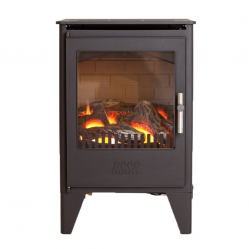Gas Stoves > Flueless Gas Stoves

Flueless Gas Stoves
Now you can enjoy all the perks of a gas stove but without the need for a flue system or chimney breast. A flueless gas stove works by drawing cooler air from the room into the appliance, by way of air vents located at the front of the appliance, this air then gets heated inside the appliance through a heat exchanger and released into the room as hot convection air. Any remaining gases are cleaned through a catalytic converter and released back into the room. We supply a large range of highly efficient flueless gas stoves in a variety of styles and outputs, to suit your interior décor and stove requirements. The wonderful thing about flueless gas fires is that it can be positioned almost anywhere within the room; it does not needed to be connected to an existing chimney system nor be installed on an external wall and therefore is a very versatile way of heating a room.